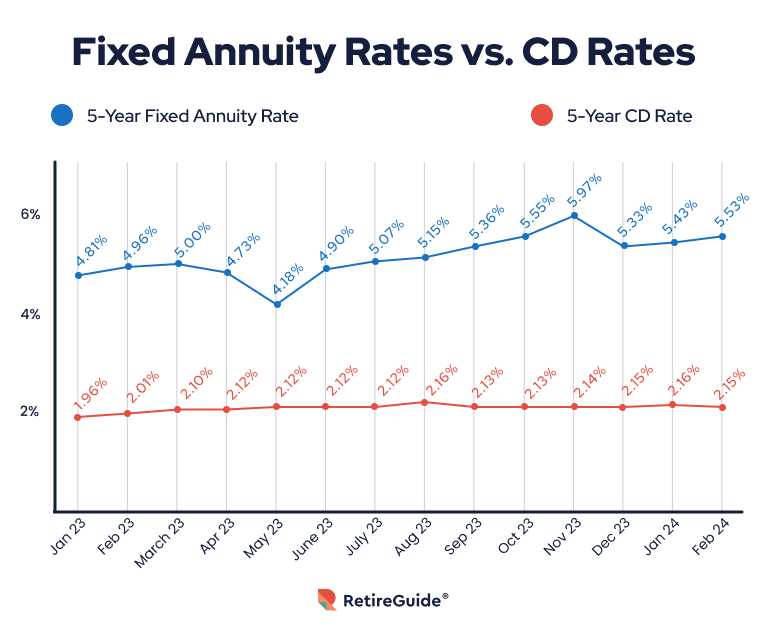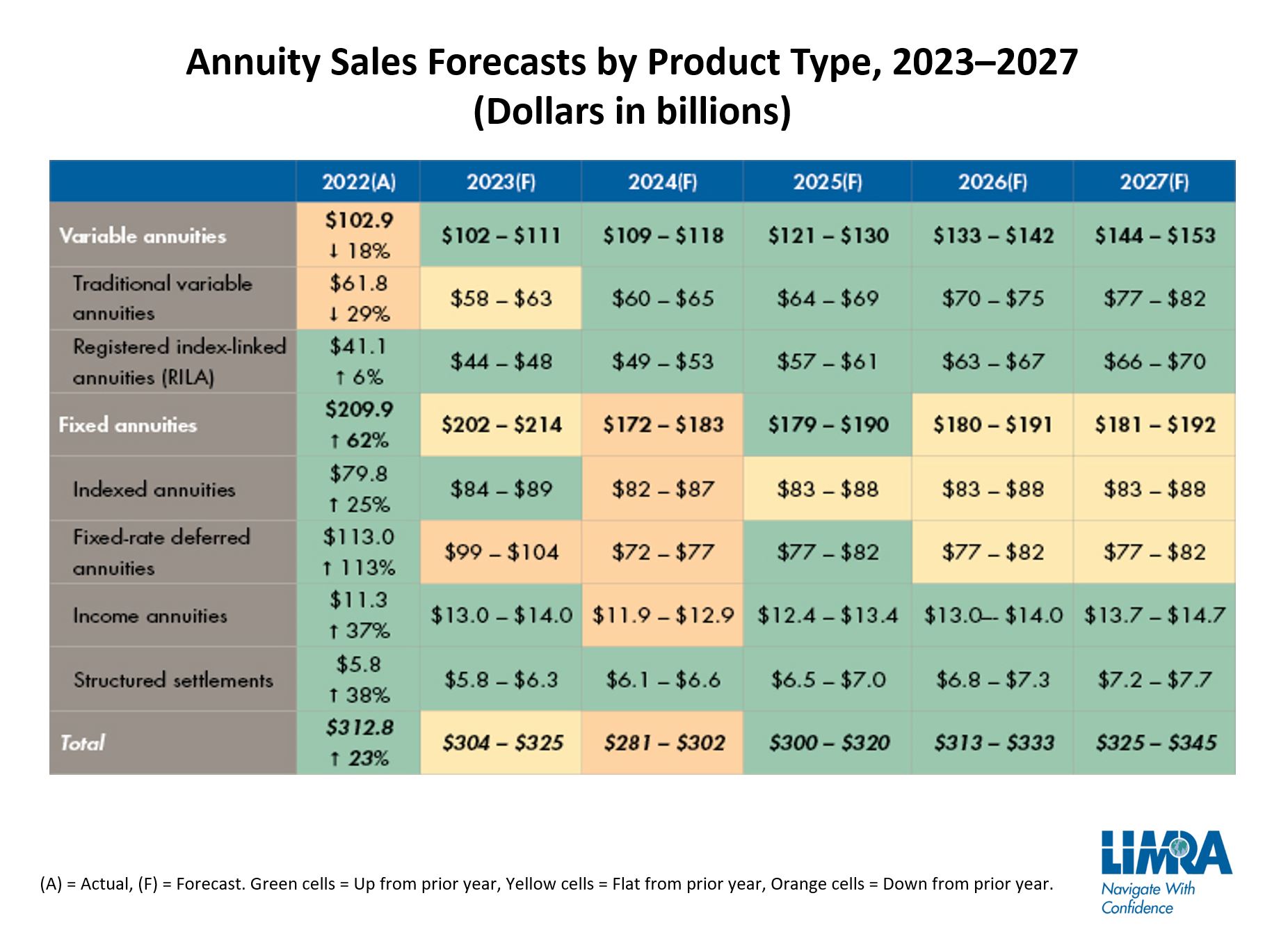All Categories
Featured
Table of Contents
The payment might be spent for development for a lengthy period of timea single costs postponed annuityor spent momentarily, after which payment beginsa solitary premium instant annuity. Solitary premium annuities are usually moneyed by rollovers or from the sale of a valued property. An adaptable costs annuity is an annuity that is intended to be moneyed by a collection of settlements.
Owners of taken care of annuities recognize at the time of their purchase what the value of the future capital will be that are generated by the annuity. Obviously, the variety of capital can not be understood ahead of time (as this relies on the agreement owner's lifespan), but the assured, dealt with passion rate a minimum of offers the proprietor some degree of assurance of future revenue from the annuity.
While this difference seems easy and simple, it can dramatically impact the worth that a contract owner eventually stems from his/her annuity, and it produces significant uncertainty for the contract proprietor - Retirement savings with annuities. It likewise commonly has a product influence on the degree of fees that an agreement owner pays to the providing insurance provider
Set annuities are typically utilized by older financiers who have restricted properties however who intend to balance out the danger of outliving their properties. Set annuities can function as a reliable tool for this function, though not without specific disadvantages. For instance, when it comes to prompt annuities, as soon as an agreement has been bought, the agreement owner gives up any and all control over the annuity possessions.
Understanding Variable Annuity Vs Fixed Annuity Key Insights on Your Financial Future Defining the Right Financial Strategy Pros and Cons of Variable Annuity Vs Fixed Annuity Why Choosing the Right Financial Strategy Can Impact Your Future How to Compare Different Investment Plans: A Complete Overview Key Differences Between Different Financial Strategies Understanding the Key Features of Long-Term Investments Who Should Consider Fixed Annuity Or Variable Annuity? Tips for Choosing the Best Investment Strategy FAQs About Fixed Vs Variable Annuity Pros And Cons Common Mistakes to Avoid When Choosing a Financial Strategy Financial Planning Simplified: Understanding Your Options A Beginner’s Guide to Tax Benefits Of Fixed Vs Variable Annuities A Closer Look at How to Build a Retirement Plan
As an example, an agreement with a typical 10-year abandonment period would certainly bill a 10% abandonment charge if the agreement was surrendered in the first year, a 9% abandonment fee in the 2nd year, and more until the abandonment cost gets to 0% in the contract's 11th year. Some postponed annuity contracts contain language that enables for tiny withdrawals to be made at different periods throughout the abandonment period scot-free, though these allowances usually come with an expense in the type of lower guaranteed rate of interest.
Just as with a repaired annuity, the owner of a variable annuity pays an insurance provider a swelling sum or series of payments for the assurance of a collection of future settlements in return. As pointed out over, while a dealt with annuity expands at a guaranteed, constant rate, a variable annuity expands at a variable rate that depends upon the efficiency of the underlying financial investments, called sub-accounts.
During the accumulation phase, properties purchased variable annuity sub-accounts expand on a tax-deferred basis and are exhausted only when the contract proprietor withdraws those incomes from the account. After the build-up phase comes the income stage. Gradually, variable annuity properties ought to theoretically increase in value till the agreement proprietor chooses she or he would love to begin withdrawing money from the account.
The most substantial issue that variable annuities commonly present is high expense. Variable annuities have a number of layers of charges and expenses that can, in aggregate, produce a drag of approximately 3-4% of the agreement's value annually. Below are the most usual fees connected with variable annuities. This expenditure makes up the insurance provider for the risk that it assumes under the regards to the contract.
M&E expenditure costs are calculated as a portion of the agreement value Annuity providers hand down recordkeeping and other administrative costs to the agreement owner. This can be in the type of a flat annual cost or a percent of the agreement value. Management fees might be consisted of as component of the M&E threat fee or might be analyzed individually.
These fees can vary from 0.1% for easy funds to 1.5% or more for proactively taken care of funds. Annuity agreements can be tailored in a number of methods to offer the specific demands of the contract proprietor. Some usual variable annuity motorcyclists include assured minimum accumulation advantage (GMAB), ensured minimum withdrawal benefit (GMWB), and ensured minimal revenue advantage (GMIB).
Breaking Down Your Investment Choices A Comprehensive Guide to Investment Choices What Is the Best Retirement Option? Advantages and Disadvantages of Choosing Between Fixed Annuity And Variable Annuity Why Variable Vs Fixed Annuity Can Impact Your Future How to Compare Different Investment Plans: Simplified Key Differences Between Different Financial Strategies Understanding the Risks of Variable Annuity Vs Fixed Indexed Annuity Who Should Consider Strategic Financial Planning? Tips for Choosing What Is Variable Annuity Vs Fixed Annuity FAQs About Fixed Vs Variable Annuity Pros And Cons Common Mistakes to Avoid When Choosing What Is Variable Annuity Vs Fixed Annuity Financial Planning Simplified: Understanding Your Options A Beginner’s Guide to What Is A Variable Annuity Vs A Fixed Annuity A Closer Look at How to Build a Retirement Plan
Variable annuity contributions supply no such tax reduction. Variable annuities often tend to be very inefficient cars for passing wide range to the future generation since they do not delight in a cost-basis change when the initial contract owner passes away. When the proprietor of a taxed investment account dies, the price bases of the investments kept in the account are changed to reflect the marketplace costs of those investments at the time of the owner's fatality.
Beneficiaries can acquire a taxed financial investment portfolio with a "clean slate" from a tax obligation perspective. Such is not the instance with variable annuities. Investments held within a variable annuity do not get a cost-basis adjustment when the original proprietor of the annuity passes away. This means that any kind of accumulated unrealized gains will be passed on to the annuity proprietor's heirs, in addition to the linked tax obligation burden.

One significant concern connected to variable annuities is the potential for problems of passion that may feed on the component of annuity salesmen. Unlike an economic advisor, that has a fiduciary task to make investment choices that benefit the customer, an insurance coverage broker has no such fiduciary commitment. Annuity sales are extremely financially rewarding for the insurance coverage experts who offer them as a result of high ahead of time sales payments.
Numerous variable annuity contracts include language which puts a cap on the percentage of gain that can be experienced by certain sub-accounts. These caps protect against the annuity proprietor from fully joining a section of gains that might or else be enjoyed in years in which markets generate considerable returns. From an outsider's perspective, it would certainly seem that capitalists are trading a cap on investment returns for the abovementioned assured flooring on investment returns.
Analyzing Variable Vs Fixed Annuity A Comprehensive Guide to Fixed Annuity Vs Variable Annuity Breaking Down the Basics of Investment Plans Benefits of Choosing the Right Financial Plan Why Choosing the Right Financial Strategy Matters for Retirement Planning Immediate Fixed Annuity Vs Variable Annuity: Simplified Key Differences Between Fixed Interest Annuity Vs Variable Investment Annuity Understanding the Rewards of Variable Annuity Vs Fixed Annuity Who Should Consider Strategic Financial Planning? Tips for Choosing the Best Investment Strategy FAQs About Variable Vs Fixed Annuity Common Mistakes to Avoid When Planning Your Retirement Financial Planning Simplified: Understanding Your Options A Beginner’s Guide to Fixed Vs Variable Annuity A Closer Look at Fixed Annuity Vs Equity-linked Variable Annuity
As noted over, surrender charges can drastically limit an annuity proprietor's ability to relocate possessions out of an annuity in the very early years of the contract. Additionally, while most variable annuities permit agreement proprietors to take out a defined quantity during the build-up stage, withdrawals past this amount typically lead to a company-imposed cost.
Withdrawals made from a fixed interest price financial investment choice could additionally experience a "market price change" or MVA. An MVA changes the value of the withdrawal to reflect any kind of modifications in interest rates from the moment that the money was bought the fixed-rate option to the time that it was taken out.

On a regular basis, even the salespeople who market them do not completely comprehend how they function, therefore salespeople occasionally prey on a customer's emotions to sell variable annuities as opposed to the values and suitability of the items themselves. We think that capitalists should fully recognize what they possess and just how much they are paying to possess it.
However, the same can not be claimed for variable annuity properties held in fixed-rate financial investments. These possessions lawfully come from the insurance provider and would certainly consequently be at threat if the firm were to stop working. Any assurances that the insurance coverage company has actually agreed to provide, such as a guaranteed minimum income advantage, would certainly be in concern in the event of an organization failing.
Breaking Down What Is Variable Annuity Vs Fixed Annuity Everything You Need to Know About Financial Strategies Breaking Down the Basics of Fixed Income Annuity Vs Variable Growth Annuity Advantages and Disadvantages of Fixed Vs Variable Annuity Why Choosing the Right Financial Strategy Is Worth Considering How to Compare Different Investment Plans: A Complete Overview Key Differences Between Different Financial Strategies Understanding the Risks of Fixed Index Annuity Vs Variable Annuity Who Should Consider Strategic Financial Planning? Tips for Choosing the Best Investment Strategy FAQs About Variable Annuity Vs Fixed Indexed Annuity Common Mistakes to Avoid When Choosing a Financial Strategy Financial Planning Simplified: Understanding What Is A Variable Annuity Vs A Fixed Annuity A Beginner’s Guide to Retirement Income Fixed Vs Variable Annuity A Closer Look at Fixed Vs Variable Annuity Pros And Cons
Possible buyers of variable annuities ought to comprehend and take into consideration the economic condition of the issuing insurance policy company prior to getting in right into an annuity contract. While the advantages and downsides of different kinds of annuities can be questioned, the actual concern bordering annuities is that of viability. Simply put, the concern is: who should own a variable annuity? This inquiry can be difficult to address, given the myriad variants offered in the variable annuity universe, yet there are some fundamental standards that can assist investors choose whether annuities ought to play a duty in their economic plans.
As the claiming goes: "Buyer beware!" This short article is prepared by Pekin Hardy Strauss, Inc. ("Pekin Hardy," dba Pekin Hardy Strauss Wide Range Administration) for informational purposes just and is not planned as a deal or solicitation for business. The info and information in this write-up does not constitute lawful, tax, accountancy, financial investment, or various other specialist suggestions.
Table of Contents
Latest Posts
Exploring Variable Annuity Vs Fixed Annuity A Comprehensive Guide to What Is A Variable Annuity Vs A Fixed Annuity Defining Variable Annuity Vs Fixed Indexed Annuity Features of Pros And Cons Of Fixed
Analyzing Strategic Retirement Planning A Comprehensive Guide to Annuity Fixed Vs Variable Defining Fixed Index Annuity Vs Variable Annuity Advantages and Disadvantages of Different Retirement Plans W
Breaking Down Your Investment Choices A Comprehensive Guide to Investment Choices Defining the Right Financial Strategy Features of Smart Investment Choices Why Fixed Index Annuity Vs Variable Annuity
More
Latest Posts